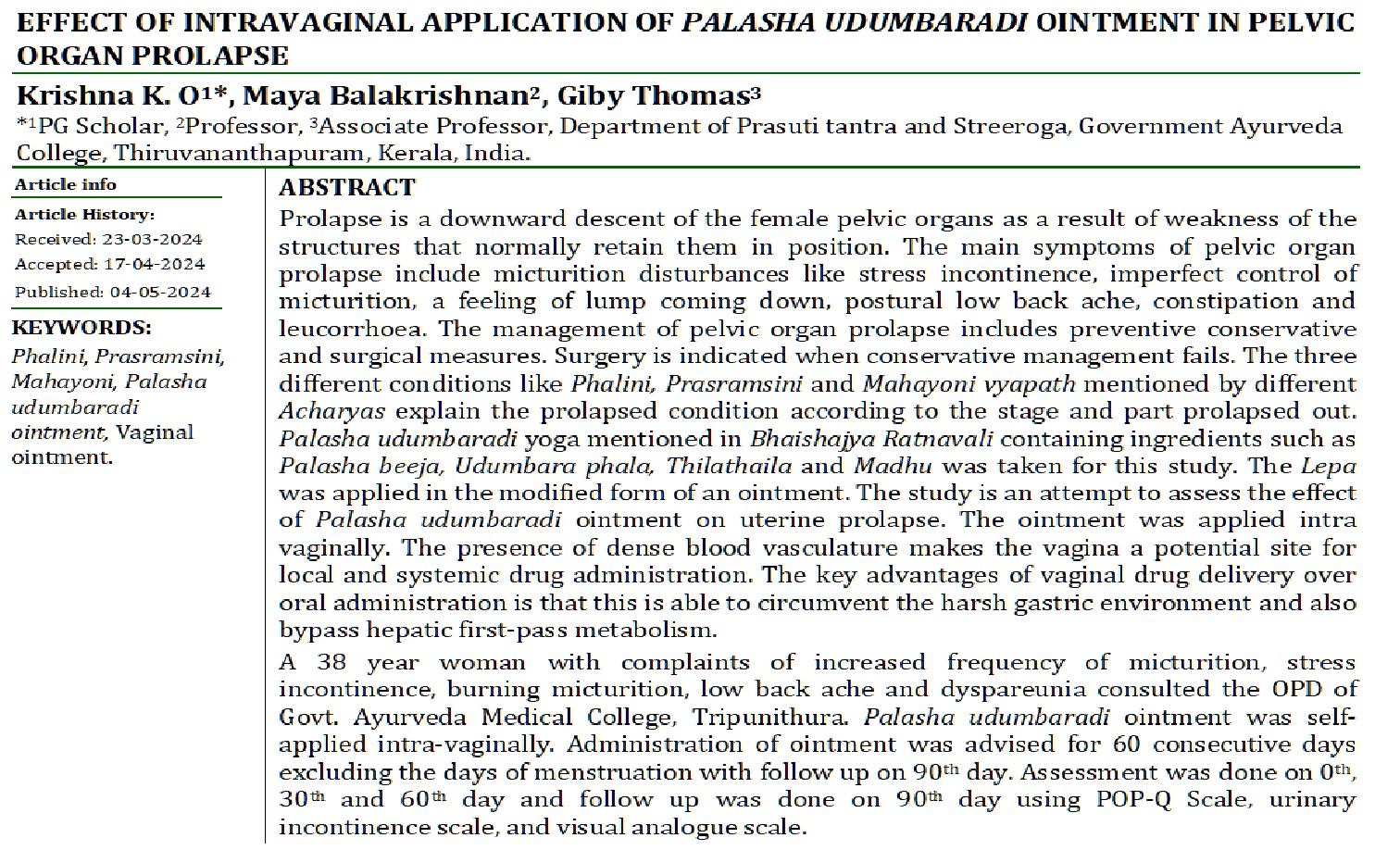Effect of Intravaginal Application of Palasha Udumbaradi Ointment on Pelvic Organ Prolapse
Abstract
Prolapse is a downward descent of the female pelvic organs as a result of weakness of the structures that normally retain them in position. The main symptoms of pelvic organ prolapse include micturition disturbances like stress incontinence, imperfect control of micturition, a feeling of lump coming down, postural low back ache, constipation and leucorrhoea. The management of pelvic organ prolapse includes preventive conservative and surgical measures. Surgery is indicated when conservative management fails. The three different conditions like Phalini, Prasramsini and Mahayoni vyapath mentioned by different Acharyas explain the prolapsed condition according to the stage and part prolapsed out. Palasha udumbaradi yoga mentioned in Bhaishajya Ratnavali containing ingredients such as Palasha beeja, Udumbara phala, Thilathaila and Madhu was taken for this study. The Lepa was applied in the modified form of an ointment. The study is an attempt to assess the effect of Palasha udumbaradi ointment on uterine prolapse. The ointment was applied intra vaginally. The presence of dense blood vasculature makes the vagina a potential site for local and systemic drug administration. The key advantages of vaginal drug delivery over oral administration is that this is able to circumvent the harsh gastric environment and also bypass hepatic first-pass metabolism.
A 38 year woman with complaints of increased frequency of micturition, stress incontinence, burning micturition, low back ache and dyspareunia consulted the OPD of Govt. Ayurveda Medical College, Tripunithura. Palasha udumbaradi ointment was self-applied intra-vaginally. Administration of ointment was advised for 60 consecutive days excluding the days of menstruation with follow up on 90th day. Assessment was done on 0th, 30th and 60th day and follow up was done on 90th day using POP-Q Scale, urinary incontinence scale, and visual analogue scale.
Downloads

Copyright (c) 2024 International Journal of Ayurveda and Pharma Research

This work is licensed under a Creative Commons Attribution-NonCommercial-ShareAlike 4.0 International License.






